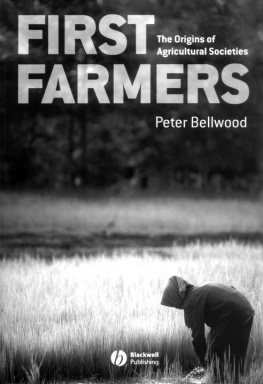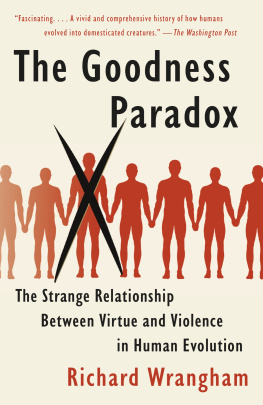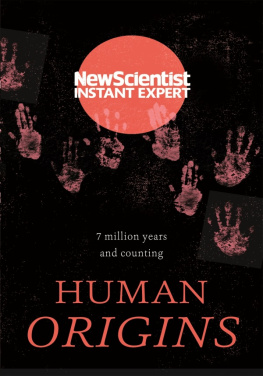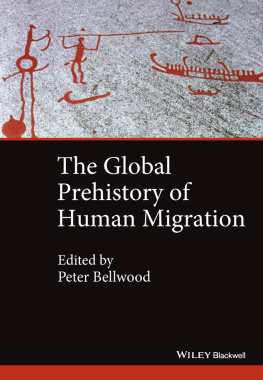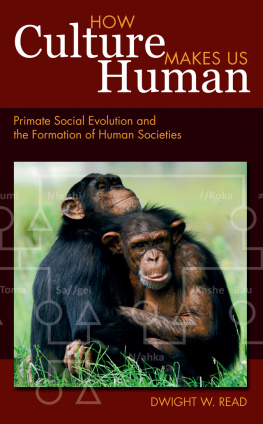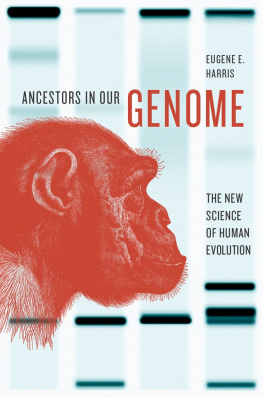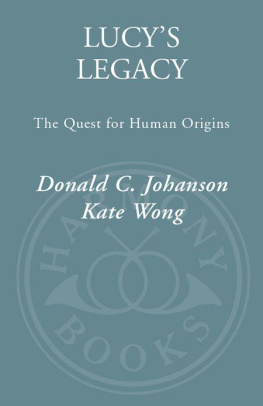THE FIVE-MILLION-YEAR ODYSSEY
The Five-Million-Year Odyssey
THE HUMAN JOURNEY FROM APE TO AGRICULTURE
PETER BELLWOOD
PRINCETON UNIVERSITY PRESS
PRINCETON & OXFORD
Copyright 2022 by Peter Bellwood
Princeton University Press is committed to the protection of copyright and the intellectual property our authors entrust to us. Copyright promotes the progress and integrity of knowledge. Thank you for supporting free speech and the global exchange of ideas by purchasing an authorized edition of this book. If you wish to reproduce or distribute any part of it in any form, please obtain permission.
Requests for permission to reproduce material from this work should be sent to
Published by Princeton University Press
41 William Street, Princeton, New Jersey 08540
99 Banbury Road, Oxford OX2 6JX
press.princeton.edu
All Rights Reserved
Library of Congress Cataloging-in-Publication Data
Names: Bellwood, Peter S., author.
Title: The five-million-year odyssey : the human journey from ape to agriculture / Peter Bellwood.
Description: Princeton, New Jersey : Princeton University Press, 2022. | Includes bibliographical references and index.
Identifiers: LCCN 2021052570 (print) | LCCN 2021052571 (ebook) | ISBN 9780691197579 (hardback) | ISBN 9780691236339 (ebook)
Subjects: LCSH: Human evolution. | Human beingsOrigin. | Human beingsMigrations. | Social evolution. | CivilizationHistory. | Language and languagesOrigin. | Language and cultureHistory. | BISAC: SCIENCE / Life Sciences / Evolution | SOCIAL SCIENCE / Anthropology / Physical
Classification: LCC GN281 .B438 2022 (print) | LCC GN281 (ebook) | DDC 599.93/8dc23/eng/20211201
LC record available at https: / /lccn.loc.gov/2021052570
LC ebook record available at https: / /lccn.loc.gov/2021052571
Version 1.0
British Library Cataloging-in-Publication Data is available
Editorial: Alison Kalett, Hallie Schaeffer
Production: Danielle Amatucci
Publicity: Sara Henning-Stout, Kate Farquhar-Thomson
Copyeditor: Vickie West
Jacket art: From Animal Biology, by Lorande Loss Woodruff (18791947), 1938.
This book is dedicated to my grandchildren
Ethan, Hamish, Leo, Isla, and Eleanor
and to the future of humanity.
CONTENTS
- xv
- xvi
- xix
- xxi
PREFACE
FOR SOME YEARS NOW, my family and friends have been telling me that I need to write an account of what I am here calling the Five-Million-Year Odyssey, told in a way that can be understood by nonspecialists. By way of background, I have spent most of my life as a specialist, a person who writes technical reports about archaeology that can only be understood by a few colleagues. This book is a new challenge for me, even though some of my previous books have been widely read by members of the general public.
That said, I do not wish to write a book that is simplistic, that demeans the intellect of my readers. Some of the topics that I discuss are fairly complicated, as befitting the complexity of human behavior, but I try to express them in simple language. There are times when I need to take the bull by the horns, and it is at these times that the contents of this book, I hope, will also be of interest to some of my colleagues, especially in those fields that study the human past through information sources apart from archaeology.
I am now a retired professor of archaeology, having spent my adult life teaching undergraduate and graduate students about the achievements of ancient humans around the world. I have undertaken many archaeological research projects in Southeast Asia and the Pacific Islands, and I have also been lucky enough to visit many of the archaeological wonders of the world in other regions. Should the current pandemic allow, I hope in the future to be able to visit some more.
As a result of all this research and travel, what do I have to say that will be of interest to the general reader, and that has not been presented already by other authors? The answer, I hope, will be a long-term perspective on human populations, past, recent, and in many cases still existing today. I discuss their origins, their migrations, and in some cases their ultimate fates. I commence with ancient apes, and I finish over much of the world, beyond the reach of the ancient civilizations, close to the year 1492 CE, after which the world changed in unprecedented ways that extend beyond my narrative. This book is about the world as it was, before the impacts of the Columbian exchange and the subsequent Colonial Era.
This book is also a personal account that reflects my own career and interests, as well as my conviction that the human past belongs to everyone. I write not just from the perspective of an archaeologist but as someone who has also discovered that archaeology alone, despite its undoubted merits, will not take us very far in terms of a broad understanding of the human past. We also need the bones, the genes, and, during the later part of the record, the reconstructed speech of our ancestors. I do not claim to be an expert in every field of research that I discuss, but I firmly believe that there is still space within human knowledge for a single author to present an opinion on that perennial questionWhere do we all come from?
How an Archaeologist Discovered Languages and Genes
As an undergraduate student at Cambridge University during the mid-1960s, I determined many future developments in my life by studying archaeology, taught at that time as a freestanding and practical field of study within the general milieu of history and anthropology, with its own body of theory and interpretation. Nowadays, archaeology has become an integral part of a much broader multidisciplinary network of scientific approaches toward the past, a research network that tracks the histories of human populations in terms of their archaeology, their languages, and their DNA. The current boom in DNA analysis from both the living and the dead that underpins so much current knowledge was little more than a science fiction dream of the future in the 1960s, as were personal computers and online journals.
In 1966, I made a fateful decision that determined my perspective on the world of human prehistory ever after. After a stint as an archaeological supervisor on the excavation of a tepe (ancient city mound) in Lorestan Province, western Iran, organized by Institute of Archaeology (London) archaeologist Clare Goff, I accepted a post in 1967 as Lecturer in Archaeology at the University of Auckland in New Zealand. Here, and working out of the Australian National University (ANU) in Canberra after 1973, I discovered the rest of the worldat least outside Europe, North Africa, and the Middle East, the focal regions of my Cambridge studies. In both Auckland and Canberra I had colleagues who were social anthropologists, linguists, and biological anthropologists, and they were always happy to discuss matters of common interest. I also had the good fortune to be teaching archaeology rather than learning it, which is essential if one wishes to find out what one really thinks about topics that matter.
In New Zealand, I discovered the indigenous peoples of Southeast Asia and the Pacific, rich in languages, social anthropology, and biological variation. While living there I continued doing archaeology from the ground, both in New Zealand itself and in various tropical Polynesian archipelagos, especially the Marquesas and Cook Islands. But my attention soon shifted away from the ancient artifacts toward the real people who once existed behind them. I wanted to know who these people were and where their ancestors came from.


